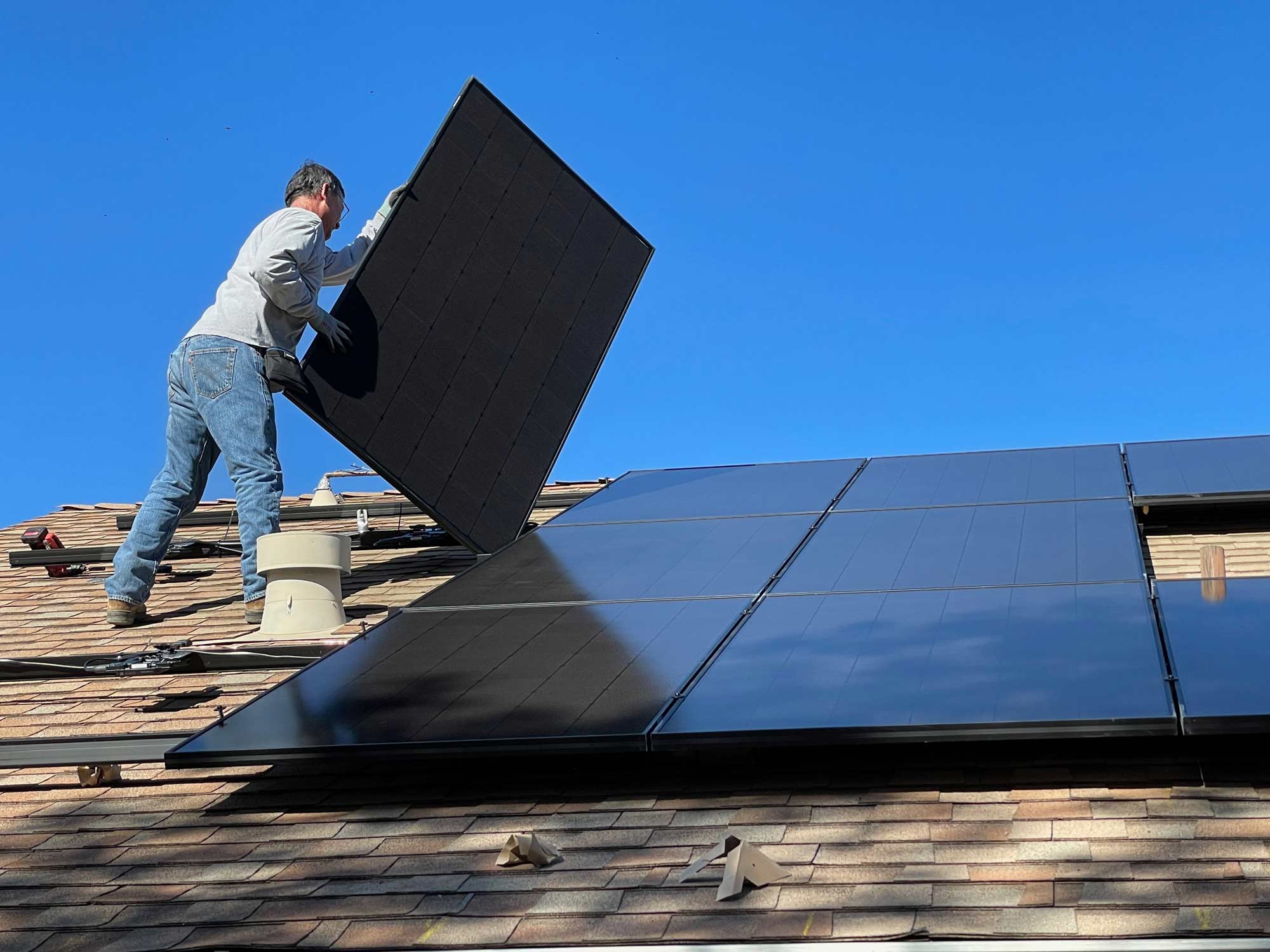

Like many other people around the world, you may be living in a rented home. Renter-occupied housing units make up 34.5% of the national stock, while homeownership rates stand at 65.5%. These renters may sometimes want to make changes to their rented homes to make them feel more like their own. But as a tenant, can you make improvements?
This article will explore whether landlords should let tenants make home improvements. The term "home improvements" refers to changes done to a home to better fit your requirements. Some examples include painting the walls, adding shelves, or even remodeling the bathroom. It will also discuss the good things and the not-so-good things about tenants making improvements.
The Benefits of Allowing Tenants to Make Home Improvements
-
Personalization and Increased Satisfaction
When you paint, put up shelves, or make other changes in your home. You may feel more relaxed and connected to your house as a result.
It's like adding your own special touch. You're more inclined to take good care of your house if you feel content and happy in it. This means you might keep it clean and fix things when they break. This is beneficial to both the landlords and tenants, as it keeps the home in good shape.
-
Attracting and Retaining Quality Tenants
The best renters are those who will take good care of the landlord's property. Permitting tenants to make alterations may draw in more people searching for long-term residences in a space they can personalize. This will make it easier to find new tenants in less time.
-
Higher Rental Income
Some improvements can make the home more valuable. For example, if you upgrade the kitchen or bathroom, it can make the home worth more. When a home is worth more, landlords can charge a higher rent. So, if you make improvements, the home becomes more valuable. It could mean the landlord might ask for more rent. This is also worth considering if you're embarking on any improvement.
-
Long-Term Property Upkeep
Making home improvements means you are, in effect, taking good care of them. You might fix things that break or keep an eye out for any problems. This helps keep the house in good condition. When you take care of the home, it means less work and costs for the landlord. So, permitting home improvements is beneficial to both parties.
Drawbacks and Considerations for Landlords
While there are good things about tenants making improvements, There are also some things landlords need to think about before giving the green light.
-
Quality Control and Potential Damage
Tenants' work may not always be of the highest caliber. They may not do it well, and it can look bad or even cause damage.
Hence, it's vital to specify what tenants are permitted to improve and what they're not allowed to improve. They need to make sure that any changes are safe and won't harm the home. Homeowners should also monitor the work and ensure it's done properly.
-
Legal and Liability Concerns
Landlords have to think about the laws and rules related to tenant improvements. What are tenants allowed to do? What should they not handle? Who is responsible if anything goes wrong? For example, if a tenant gets hurt while making improvements, who takes care of the medical costs? These are important things that landlords need to figure out and protect themselves from.
-
Costs and Return on Investment
Making improvements can cost money. Landlords have to think about whether allowing tenants to make changes is worth it. Some improvements may not make the home more valuable or bring in more rent. Landlords need to consider the costs and benefits before giving permission for improvements.
Considerations for alternative housing arrangements
In some cases, the distinction between landlord and tenant may be a little harder to define. For example, tenants living in co-op housing arrangements are effectively tenants and landlords at the same time, with tenants living in individual units equally invested in the property as a whole.
In this situation, proposed home improvements may need to be discussed and agreed upon in a formal meeting. The tenant that wishes to make home improvements must make a case for their plans, with the wider community sharing their opinions based on the shared benefit to the co-op.
Another example is rent-to-own housing agreements, an arrangement in which the tenant has a legal right to purchase the property they’re renting after a set period of time. If improvements are made before the tenant buys the house, they may need to ask for the landlord’s permission. It’s usually worth discussing factors like this prior to signing a lease to avoid potential future conflict.
Establishing Guidelines and Agreements
To make sure everything goes well, landlords and tenants need to talk and agree on some important things. The subject of tenant improvements must be addressed in the lease agreement. Here are some things they should consider:
- Writing it Down: Landlords should make a written agreement that states what improvements are allowed. Who handles the costs, and any other important details?
- Asking for Permission: Before making any modification, tenants have to seek permission from landlords. This will allow the landlords to review the plans and ensure they're ok before execution.
- Talking and fixing: communication is key! There should be good communication between the landlord and the tenant. This communication will ensure any issues or repairs are taken care of by mutual agreement. Regular inspections can help find and fix problems before they get worse.
Can Tenants Be Allowed to Make Home Improvements?
Landlords can choose to allow tenants to make home improvements. This should come with certain conditions and guidelines.
To balance allowing renters the opportunity to modify their living areas while preserving the value and integrity of the property. Landlords should set explicit norms, standards, and agreements. This may result in more satisfaction, higher rental revenue, and longer-term property maintenance.
Here are some key points to consider when allowing tenants to make home improvements:
- Permission and Communication: Landlords should require tenants to seek permission first. They should also communicate their plans before making any changes. This allows the landlord to review and approve the proposed improvements. It ensures they align with safety regulations and are within the agreed-upon guidelines.
- Types of Improvements: Establish clear rules about the types of improvements that are allowed. This will help avoid misunderstandings. Some landlords may permit minor changes. Others may be open to more significant modifications.
- Safety and Compliance: Landlords must ensure that any home improvement safety measures follow safety standards and local building codes. This may need inspections or certifications to ensure the work is done correctly. With this, any potential risk to the tenant and the property will be averted.
- Responsibility for Costs: They both must agree on who will be responsible for the costs associated with the improvements. This includes both upfront expenses. Any potential maintenance or repairs resulting from the modifications. Clear agreements should be made on financial responsibilities. This is important to avoid disputes in the future.
- Documentation and Agreements: Have written documentation, such as a lease addendum or improvement agreement. This will outline the specific improvements permitted. It will also state any restrictions and the responsibilities of both parties. This helps to avoid misunderstandings and provides a reference for future reference if any issues arise.
- Insurance Coverage: Landlords should review their insurance policies. This is to ensure they provide adequate coverage for tenant-made improvements. Some modifications may need extra coverage or adjustments to existing policies. This protects against potential risks or liabilities.
- Monitoring and Inspections: Regular inspections can help landlords ensure that the tenant-made improvements are maintained properly. This allows for prompt identification and resolution of any issues that may arise.
- Security Deposit Laws: Both parties should become familiar with the particular rules and legislation that apply to security deposits in their area. This may contribute to a transparent and fair procedure. This will enhance a good working relationship when it comes to the handling and return of the security deposit.
Note: The specific rules and regulations about tenant-made improvements can vary by jurisdiction. So it is vital for landlords to consult local laws and seek legal advice if necessary.
Conclusion
Allowing tenants to make home improvements can have many benefits for both tenants and landlords. It allows tenants to make the home feel more like their own. It attracts quality tenants and may increase rental income. It also promotes better long-term property upkeep.
But landlords need to consider potential problems like poor workmanship and legal concerns. By setting clear guidelines and agreements, landlords can strike a balance between letting tenants make improvements and protecting their property. Good communication and respect between landlords and tenants are important. This will bring about a positive and happy rental experience.
Related Articles:
- How To Price Market And Negotiate When Selling Fsbo
- DR Horton Utah Real Estate Market Warnings And Price Cuts Ahead
- How Glass Railings Can Increase Your Homes Value
- Home Improvement Ideas Before Selling Your Home
- How To Get Your House Ready To Sell
- St George Vs Hurricane Utah Best Place To Live
- Utah Home Buying Steps Nobody Tells You About
- Navigating Utahs Housing Market Insights And Predictions October 2024
- How To Add Personality To Your New Home
- Top Challenges Faced By Contractors Moving Between States
- 5 Places You Probably Forgot To Clean When You List Your House
- Does Water Heater Increase Home Values







